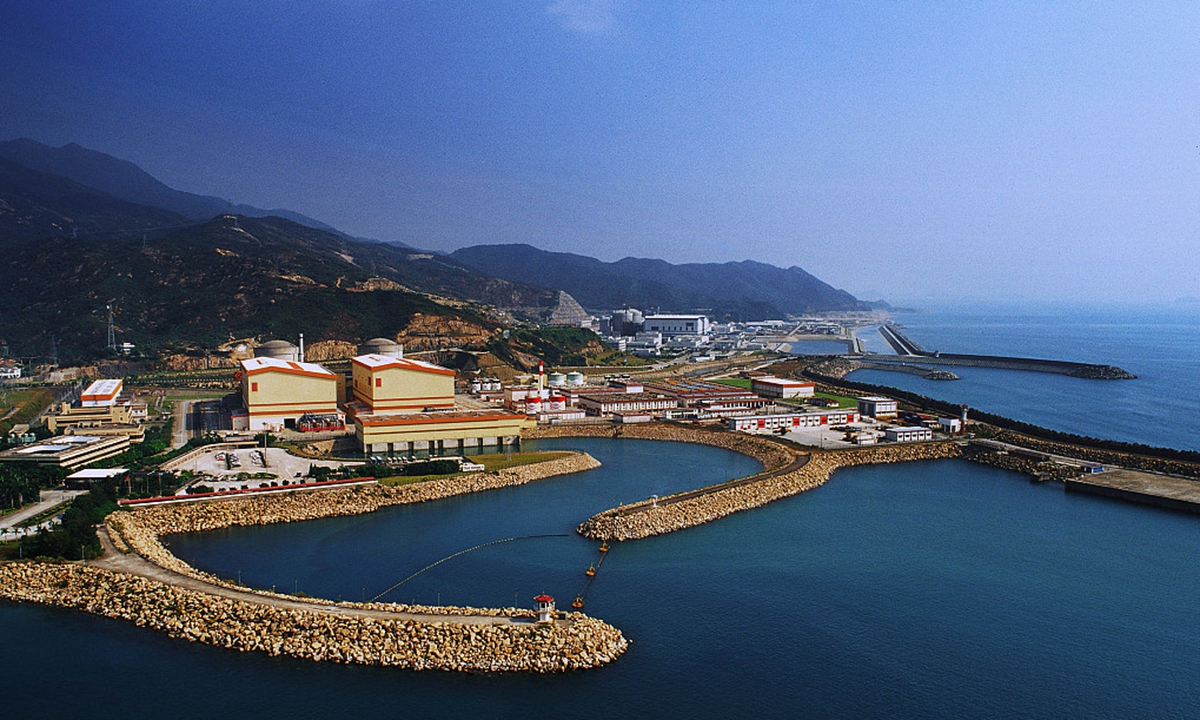
A view of the Daya Bay Nuclear Power Station in South China's Guangdong Province File Photo: CFP
Nuclear power will allow for a more secure and stable power supply structure amid the increasing demand for electricity as the industrial economy develops, Xing Ji, chief designer of the Hualong-One nuclear reactor of China National Nuclear Corporation (CNNC), said on Monday.
Xing said that nuclear fuel is very stable as it can generate electricity continuously after the furnace is installed, and new fuel is not required for a year and a half.
Shi Lishan, a senior official with the National Energy Administration, said that by the end of 2020, the share of coal consumption in total energy consumption was reduced to 56.8 percent while the proportion of non-fossil-fuel energy consumption had grown to 15.9 percent.
Moreover, the installed capacity of non-fossil energy generation increased to 980 million kilowatts, ranking first in the world.
Shi said that in 2020, nuclear power generated 366.2 billion kilowatt-hours, accounting for 4.9 percent of China’s total power generation. At present, 51 nuclear power units have been put into operation, with an installed capacity of 53.27 million kilowatts.
A further 20 nuclear power plants are under construction, with an installed capacity of 22.69 million kilowatts, and small reactor nuclear power heating projects are all on schedule, Shi added.
Xing noted that nuclear technology has been widely used in many fields, including industry, agriculture, healthcare and environmental management, which is very close to people's lives.
In terms of agriculture, irradiation can cultivate crops with higher yields and better disease resistance. In health care, radiation technology can detect potential problems in the human body at an early stage and provide reference for tumor diagnosis.
